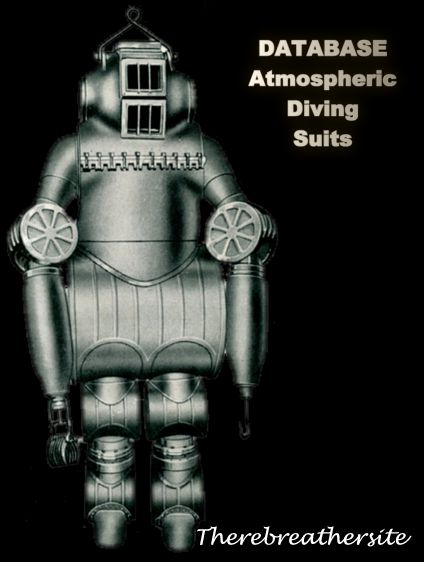
Not many inventors have had as much influence on the development of the atmospheric diving suit as Joseph Salim Peress. As early as 1918, after having spent his youth in the Middle East, he began to dream about an atmospheric diving suit. In 1921 he realised his dream. This dream continued until the 1970s when, as a senior citizen in retirement, he contributed to the development of diving suits such as JIM. Here is the story of Peress!
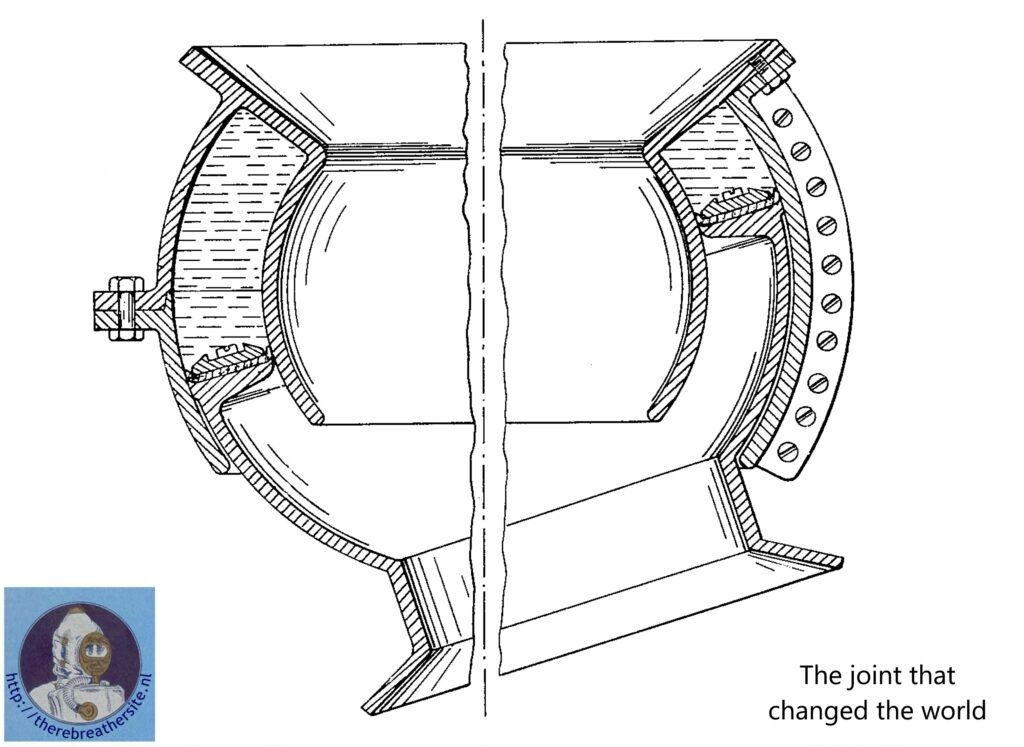
Joseph Salim Peress (1896-1978), living in the UK was a marine engineer. He grew up in the Middle East. Peress has clearly made a mark in the development of atmospheric diving suits.
In 1918 Peress began working for WG Tarrant at Byfleet, United Kingdom, where he was given the space and tools to develop his ideas about constructing an ADS. His first attempt was an immensely complex prototype machined from solid stainless steel. A revolutionary design as Peress worked with oil-filled ball joints. The stainless steel suit was able to dive to a depth of 650 fr (- about 196 metres). The original suit from 1921 was supplied with air by feeding armoured hoses up- and downwards. The 50-piece suit has a weight of about 550 pounds (~250 kg).
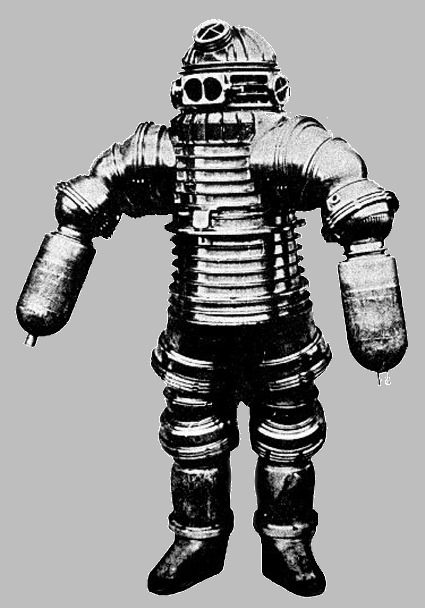
There are many pictures online showing Peress on a fair with his Stainless suit. More detailled picture can be found here
Peress had a natural talent for engineering design, and had challenged himself to construct an articulated atmospheric diving suit (ADS) that would keep divers dry and at atmospheric pressure, even at great depth. At the time, little was known about decompression diving. Various atmospheric suits had been developed during the Victorian era, but nobody had yet managed to overcome the basic design problem of constructing a joint which would remain both flexible and watertight at depth without seizing up under pressure.
In 1923 Peress was asked to design a suit for salvage work on the wreck of the P&O liner SS Egypt which had sunk in 122 m (400 ft) of water off Ushant. He declined, on the grounds that his prototype suit was too heavy for a diver to handle easily, but was encouraged by the request to begin work on a new suit using lighter materials. By 1929 he believed he had solved the weight problem, by using cast magnesium instead of stainless steel, and had also managed to improve the design of the suit’s joints by using a trapped cushion of oil to keep the surfaces moving smoothly. The oil, which was virtually non-compressible and readily displaceable, allowed the limb joints to move freely at depths of 600 ft (180 m), where the pressure was 19 bar. Peress claimed that the Tritonia suit’s joints could function at 370 mtr although this was never proven.
In 1930 Peress revealed his Tritonia suit. By May it had completed trials and was publicly demonstrated in a tank at Byfleet. In September Peress’ assistant Jim Jarret dived in the suit to a depth of 123 m (404 ft) – over 67 fathoms – in Loch Ness. The suit performed perfectly, the joints proving resistant to pressure and moving freely even at depth.
Trionia
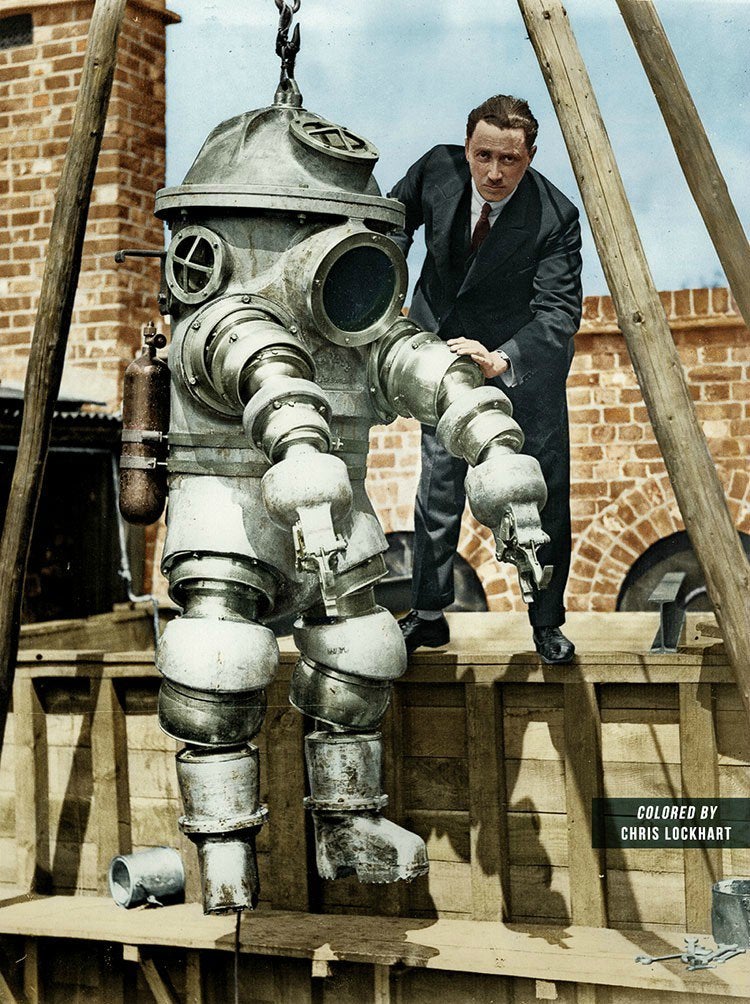
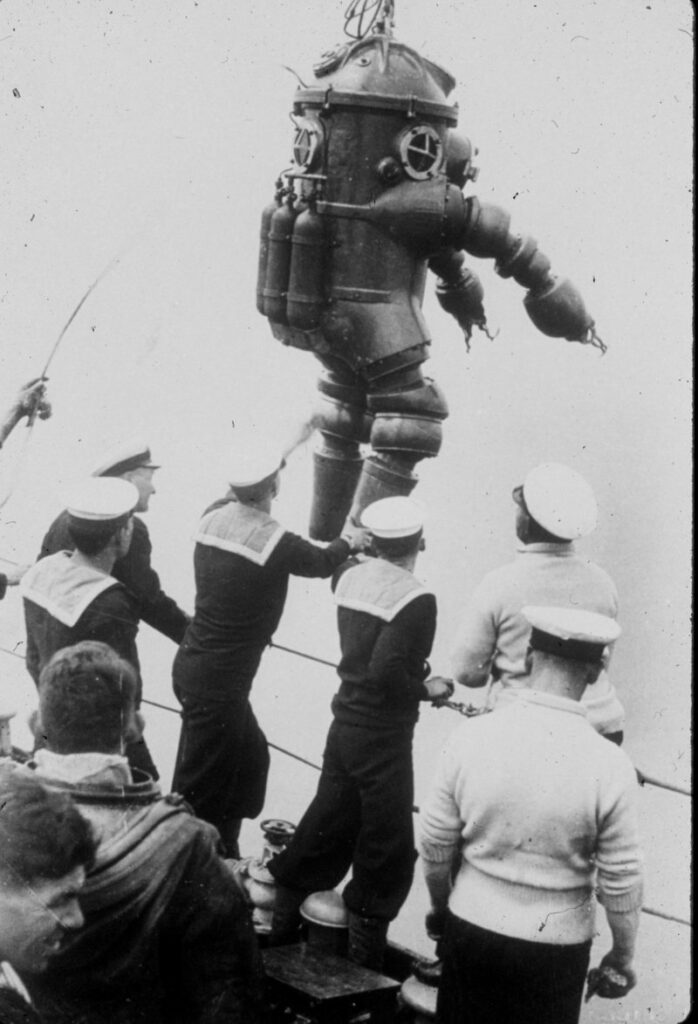

Jim Jarret made a deep dive to 90 m (300 ft), 50 fathoms, on the wreck of the Lusitania off south Ireland, followed by a shallower dive to 60 m (200 ft) in the English Channel in 1937 after which, due to lack of interest, the Tritonia suit was retired.
Peress abandoned work on diving suits and instead turned to pioneering work in plastic moulding, later forming a company which became the world’s largest manufacturer of gas turbine blades for the aircraft industry.
Centrax was founded in 1946 by Richard HH Barr OBE, the chairman, Geoffrey R White, the technical director, who had worked with Sir Frank Whittle in the early stages of jet engines at Power Jets and Joseph Salim Peress. In 1955 Centrax opened its compressor and turbine blade factory in Devon and became Centrax Ltd. In 1964 it entered into a joint arrangement with Misco Precision Casting (the Michigan-based Misco division of Howmet Castings of Ohio) of the USA and formed Central-Misco Ltd, a division of the company that made metal products with investment casting. It operated separate to the main company. Centrax has two main operating Divisions: Centrax Limited and Centrax Turbine Components Limited. The Gas Turbine Division designed, built and packages its own small gas turbine for industrial uses and since 1979, Centrax has been packaging the Rolls-Royce 501 aeroderivative gas turbine engine. In 2007 signed an exclusive deal with Rolls-Royce to package the 64 MW Rolls-Royce Trent 60 engine in a generating set in Europe-wide industrial projects. It opened a new factory on its site to build the Trent 60 sets. In 2011 Centrax Limited signed an agreement with Siemens to package the Siemens 300 and 400 industrial gas turbine for markets in UK, France, Italy, The Netherlands and Belgium.
In 1965, Peress came back from retirement, starting his collaboration with two British engineers, Mike Humphrey and Mike Borrow, interested in designing a modern atmospheric diving suit. The first order of business was finding the original Tritonia suit, which turned up in a Glasgow warehouse. After all those years, the suit was still in working condition, and the octogenarian Peress became the first person to test it in a factory test tank. In 1969 Peress became a consultant to UMEL (Underwater Marine Equipment Limited), the new company formed by Humphrey and Borrow, which eventually created the JIM suit, which was named after Peress’ diver Jim Jarret. In the end, 19 JIM suits were produced between 1974 and 1990 and Sylvia Earl made a record dive to a depth of 381 metres in 1979.

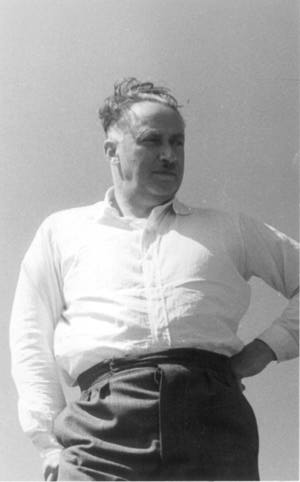
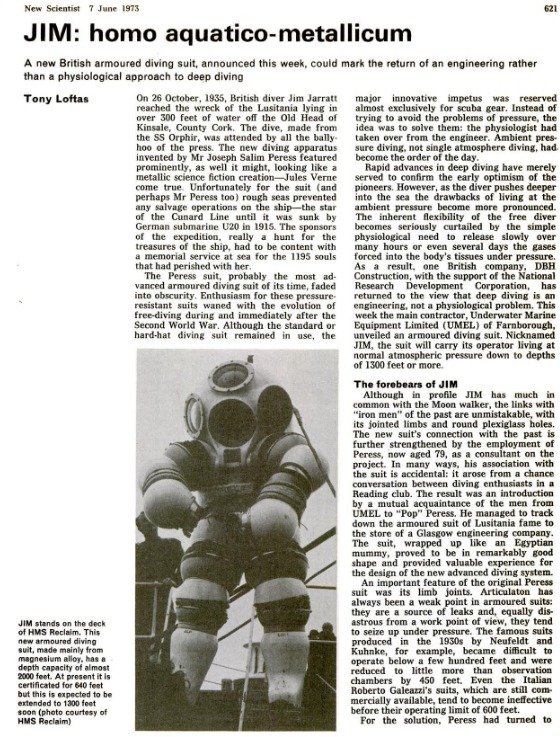
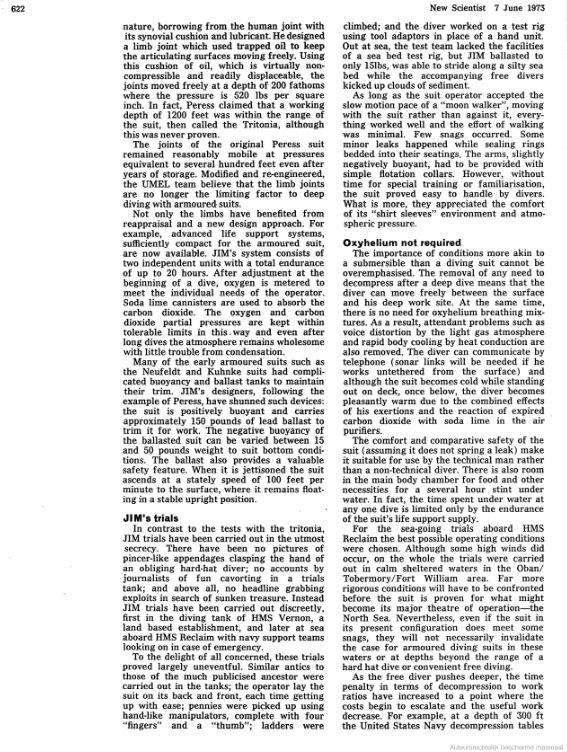
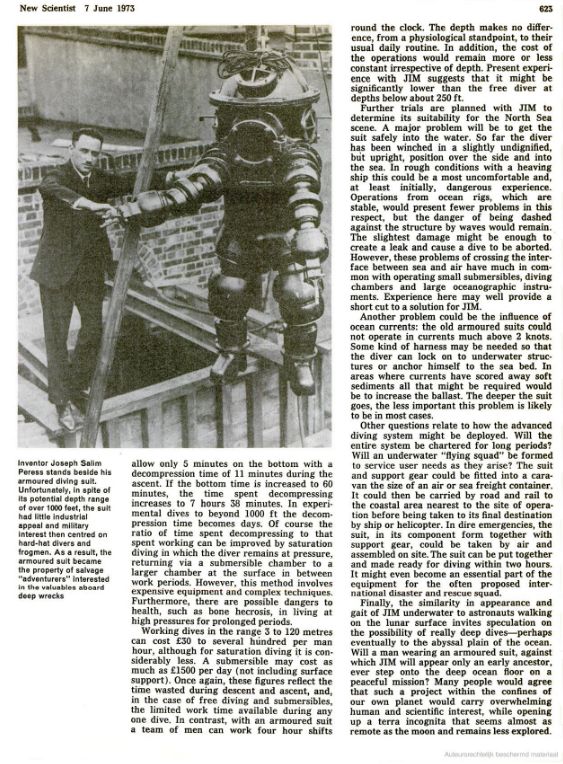

Therebreathersite was founded by Jan Willem Bech in 1999. After a diving career of many years, he decided to start technical diving in 1999. He immediately noticed that at that time there was almost no website that contained the history of closed breathing systems. The start for the website led to a huge collection that offered about 1,300 pages of information until 2019. In 2019, a fresh start was made with the website now freely available online for everyone. Therebreathersite is a source of information for divers, researchers, technicians and students. I hope you enjoy browsing the content!
